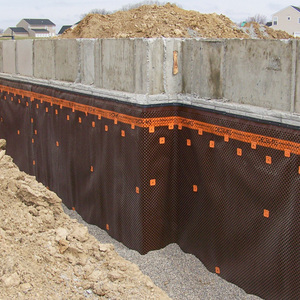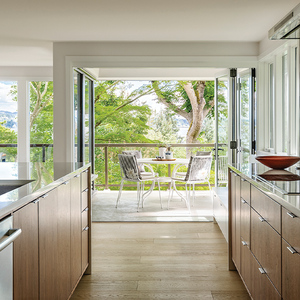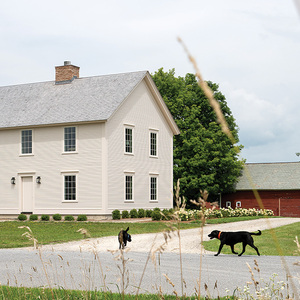*
Tom:
I am a painting contractor in Kansas City.
Please understand that porch floors are inherently very difficult for coatings.
1. Moisture often sits on the surface from rain or snow. Moisture is the number one enemy of coatings.
2. Abrasion from foot traffic and furniture can also wreak havoc on the coatings.
That being said…your failure may or may not be attributed to the sand in the previous coating. I recommend to all of our clients that they maintain their porch floor at least every other year, if not every year. They are simply high maintenance items.
Our best results have come from the following:
1. Make sure that you have removed any and all failed coatings.
2. Make sure that you have a clean and dry surface (moisture content less than 12%).
3. We use Benjamin Moore Industrial Maintenance Coating Alkyd Enamel. It is a serious product actually designed for indutrial use. It can be tinted to almost any color desired.
4. Apply a first coat thinned (with paint thinner) 50%. This initial coating will be very watery and should penetrate the wood to provide good adhesion and begin to seal the wood.
5. Apply a second coat thinned with 20% thinner.
6. Apply a final finish coat full-strength. Mix in an additive called San-Tex. It is not sand, but a mixture of tiny granules which act the same way the sand will.
Be sure to allow at least 24-48 hours between coats.
This system has worked beautifully for us even on some historically difficult porch floors. However, they still need to be inspected and maintained at least every 24 months.
Best of luck.
Ross Dessert
Certa ProPainters (KC)



















Replies
*
I read about this method in a boat construction book.
It's intended for use with varnish, but I used it
successfully with paint. Apply a coat of paint or varnish.
While it's still wet, smother it with ground walnut shells.
Let the whole works dry. Brush off the excess ground walnut shells that didn't stick. Then apply a coat of paint (or varnish) over the whole works. It's extreeeeeemly non-skid, almost to the point of being uncomfortable under bare feet. I got the ground walnut shells at one of the major paint suppliers in town.
*
i live in rainy seattle and am nearing completion on an epoxy fill of a very old fir t+g deck. i would like to paint the porch deck but i'm concerned about using a sanded paint for slip resistance. i just stripped off a very thick layer of sanded paint that had failed. i think the tiny aggregate finally loosened up and catalyzed the peeling process. does anyone have any creative suggestions for an attractive, extremely durable, slip resistant finish that would be nicely compatible with a two-part epoxy undercoat?
*sand has worked for me...but no paint lasts here for more than six to eight years max...near the stream,aj
*Tom,If you find a beter solution pass it along. I've also never been real happy with the sand and paint method. Added to the paint, the sand seems to sink to the bottom of the can despite frequent stirring. I've experimented with putting the sand in a salt shaker and sprinkling it on to a wet first coat. But, despite my best efforts, I seem to get a pattern rather than a random application. If I were to do my porch over again, I think I would use the non-slip adhesive strips despite their somewhat industrial look. If you go with the sand, you don't need much of it to be effective. Sounds like they may have used too much in the previous application.
*Sherwin Williams sell a product called Sharkes Bite. It comes in small bottles and is angular polypropylene shards, smaller than sand. It stays in suspension, will not settle out and bonds like mad. It is not made by Sherwin Williams, but by that company that makes all those concrete stains. I have it on a garage floor that is epoxied as well as a T&G wood deck where a hot tub sits. Never a bond failure, no slipping either, trucks don't wear it off in the garage......goood stuff...Keith C
*Tom:I am a painting contractor in Kansas City.Please understand that porch floors are inherently very difficult for coatings. 1. Moisture often sits on the surface from rain or snow. Moisture is the number one enemy of coatings.2. Abrasion from foot traffic and furniture can also wreak havoc on the coatings.That being said...your failure may or may not be attributed to the sand in the previous coating. I recommend to all of our clients that they maintain their porch floor at least every other year, if not every year. They are simply high maintenance items.Our best results have come from the following:1. Make sure that you have removed any and all failed coatings.2. Make sure that you have a clean and dry surface (moisture content less than 12%).3. We use Benjamin Moore Industrial Maintenance Coating Alkyd Enamel. It is a serious product actually designed for indutrial use. It can be tinted to almost any color desired.4. Apply a first coat thinned (with paint thinner) 50%. This initial coating will be very watery and should penetrate the wood to provide good adhesion and begin to seal the wood.5. Apply a second coat thinned with 20% thinner.6. Apply a final finish coat full-strength. Mix in an additive called San-Tex. It is not sand, but a mixture of tiny granules which act the same way the sand will.Be sure to allow at least 24-48 hours between coats.This system has worked beautifully for us even on some historically difficult porch floors. However, they still need to be inspected and maintained at least every 24 months.Best of luck.Ross DessertCerta ProPainters (KC)